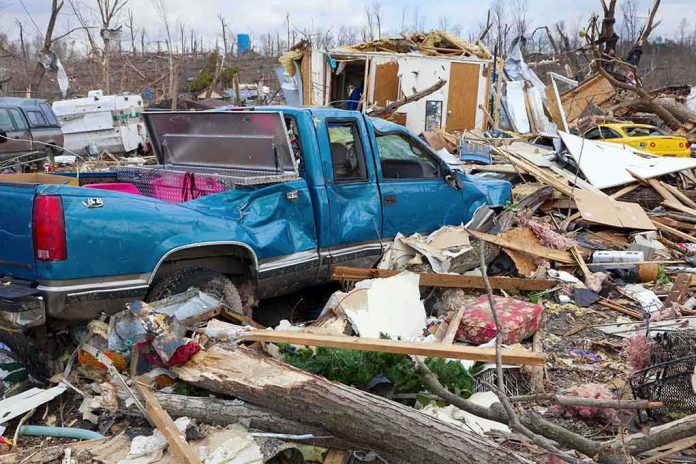
A deadly flash flood triggered by sudden cloudbursts has devastated a remote Himalayan village in Kashmir, killing over 30 people and leaving nearly 200 missing in what experts warn is yet another “distress signal” of climate change’s mounting threat to vulnerable communities.
Story Snapshot
- At least 32-34 people confirmed dead, nearly 200 missing after flash floods devastate Chasoti village in Kashmir
- Sudden cloudburst on August 14, 2025 triggered torrential flooding during peak Hindu pilgrimage season
- Rescue operations severely hampered by damaged roads, poor weather, and remote mountainous terrain
- Second major flooding disaster in India this month, highlighting infrastructure vulnerabilities in Himalayan regions
Natural Disaster Strikes During Religious Pilgrimage
On August 14, 2025, a sudden cloudburst unleashed torrential rains on Chasoti village in Kishtwar district, Indian-administered Kashmir. The remote Himalayan settlement, located over 200 kilometers from Srinagar, serves as a crucial stop for Hindu pilgrims traveling to the Machail Mata temple. The timing proved catastrophic, as the disaster struck during peak pilgrimage season when the village’s population had swelled with religious visitors, shopkeepers, and temporary workers.
Rescue Operations Face Geographic and Weather Challenges
Chief Minister Omar Abdullah confirmed the grim reality facing rescue teams: “The news is grim and accurate, verified information from the area hit by the cloudburst is slow in arriving.” Federal Deputy Minister Jitendra Singh reported that rescue teams struggle to reach the disaster zone due to washed-out roads and continuing adverse weather conditions. The mountainous terrain and damaged infrastructure have created significant logistical barriers, hampering efforts to locate the nearly 200 missing persons.
Government Response and Emergency Declaration
Authorities declared an emergency in the affected area as rescue operations continue around the clock. Prime Minister Narendra Modi assured that “every possible assistance will be provided to those in need,” while local officials coordinate search and recovery efforts. District Commissioner Pankaj Kumar Sharma oversees ground operations, with 35 injured individuals successfully rescued despite challenging conditions. The disaster has destroyed vehicles, shops, community kitchens, and temporary facilities established for pilgrims.
Pattern of Increasing Climate-Related Disasters
This tragedy marks the second major flooding disaster in India within the same month. On August 5, 2025, floods swept away the Himalayan town of Dharali in Uttarakhand, killing over 70 people. Experts attribute the increasing frequency and severity of such floods to climate change and poorly planned development in vulnerable regions. The UN’s World Meteorological Organization warns that these disasters serve as distress signals of future climate unpredictability, particularly affecting remote communities with limited infrastructure and emergency preparedness.
Flash floods in remote village in Kashmir leave over 30 people dead, 50 missing: Indian officials https://t.co/87BzgcQ94b
— ConservativeLibrarian (@ConserLibrarian) August 14, 2025
The Kashmir region’s vulnerability during monsoon season, combined with steep terrain and inadequate infrastructure, creates perfect conditions for such catastrophes. Days of heavy storms preceded the cloudburst, yet early warning systems and evacuation procedures remain insufficient for protecting these isolated communities. The disaster underscores urgent needs for improved infrastructure, better disaster preparedness, and climate adaptation strategies in India’s mountainous regions.
Sources:
Kashmir Himalaya cloud burst death
Flood kills 34 in Indian Kashmir mountain village
At least 33 feared dead flash flood
Death toll in flash floods rises to at least 32



